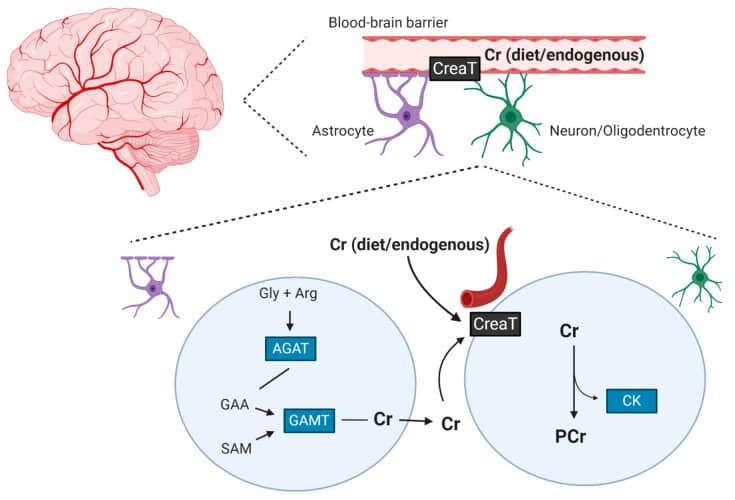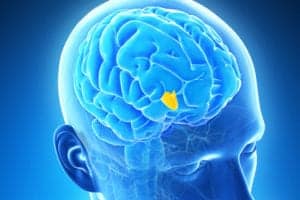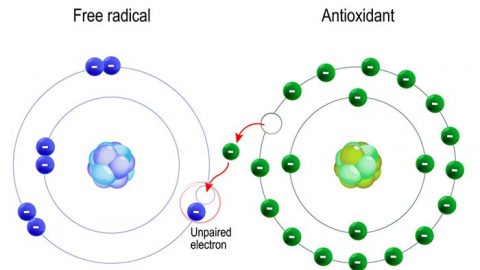Klotho protein is an enzyme that data suggests is tightly correlated with aging and a long list of age-related diseases best avoided, including diabetes, cancer, arteriosclerosis, chronic kidney disease and brain aging/dementia. The science and data of Klotho is emerging, but what exists is compelling. It also appears to be involved with controlling oxidative stress and inflammation. Basic summary is, low levels of Klotho appear to be a negative to aging and disease prevention, high levels are a plus. Animals genetically altered to express Kotho protein live longer for example, and those genetically altered to not express Kotho age rapidly. So, Klotho protein is viewed an “anti-aging protein.” Klotho therapy is being looked at now as a possible treatment for various ailments and as anti-aging therapy. Direct intervention trials in humans are lacking however examining those endpoints. A good basic overview of Klotho can be found here for those who want more details,
As this is not meant to be a review of klotho protein per se, let’s get to the focus of this article, the possible effects of klotho on brain creatine levels. While creatine (as monohydrate) is well absorbed and distributed in tissues on ingestion, increasing brain tissue levels has proven to be more difficult. The brain, via the blood brain barrier (BBB) is highly selective as to what is allowed through and able to reach the brain. Increasing brain tissue levels of creatine via ingestion of creatine has been contradictory in studies as to benefits on cognitive function and related. Some studies suggest that while the “typical” dose of 3-5g per day of creatine are adequate to saturate non brain tissues, higher doses may be required to reliably increase brain tissue levels, but it may also depend on some variables, such as vite D status, age, and others yet to be fully elucidated. An excellent review recently published that discusses those issues in more details can be found HERE.
So where does Klotho fit into this? Studies suggest that upregulating Klotho protein can activate a key tissue transporter (CT1) and thus increase brain tissue levels, and Klotho is concentrated in neuronal cells of the cerebral cortex, cerebellum, and spinal cord. For you science nerds:
“Besides other vehicles, Klotho protein (Clotho; HFTC3) is put forward as a possible stimulator of CT1 function that can uplift creatine allocation to the target tissues. This membrane-bound pleiotropic enzyme (also exists in a circulating form) participates in many metabolic pathways, including calcium-phosphate metabolism, nutrient sensing, and remyelination. Klotho is highly expressed in neuronal cells of the cerebral cortex, cerebellum, and spinal cord. The role of Klotho in high-phosphate energy metabolism modulation was revealed a few years ago when Amilaji et al. found that the co-expression of Klotho protein increases a creatine-induced current in CT1-expressing cells. The authors reported that the current through CT1 was a function of the extracellular creatine levels, with the maximal creatine-induced current was higher in cells expressing CT1 together with Klotho than in cells expressing CT1 alone (29.5 vs. 20.2 nA). This implies a Klotho-driven upregulation of creatine carriers, presumably by stabilizing the carrier protein in the cell membrane, which likely nominates Klotho protein as a therapeutic proxy to accelerate creatine uptake through CT1. Several methods have been developed lately to raise Klotho levels, including a transgenic insertion of the klotho gene, a recombinant Klotho protein administration, or using angiotensin-converting enzyme inhibitor and thiazolidinediones. However, nutrition-related interventions might also be capable of enhancing endogenous Klotho production, and perhaps to unlocks CT1 for brain creatine uptake“(1)
What can you do now? Good news is, vitamin D3, Curcumin, Glutathione, and exercise have been found to up regulate Klotho, so that appears yet another benefit and reason to take D3, Curcumin extract, a glutathione booster (whey and or NAC), and of course regular exercise. It must be noted the Klotho science has yet to be fully elucidated and is a complex system, but as we know benefits exist from those nutrients and regular exercise regardless, a “no brainer” to use along with creatine, or creatine found in Alpha Joe.
(1) Improving Brain Creatine Uptake by Klotho Protein Stimulation: Can Diet Hit the Big Time? Front. Nutr., 23 December 2021.
Sources:
Infographic used for this article: Creatine Supplementation and Brain Health. Nutrients. 2021 Feb; 13(2): 58.
The Klotho proteins in health and disease.Nature Reviews Nephrology volume 15, pages 27–44 (2019)
Current understanding of klotho. Ageing Research Reviews.Volume 8, Issue 1, January 2009, Pages 43-51
Biological Role of Anti-aging Protein Klotho. J Lifestyle Med. 2015 Mar; 5(1): 1–6.
The Biological Role of Klotho Protein in the Development of Cardiovascular Diseases, BioMed Research International, vol. 2018, Article ID 5171945, 17 pages, 2018.
Klotho protects the heart from hyperglycemia-induced injury by inactivating ROS and NF-κB-mediated inflammation both in vitro and in vivo. Biochim Biophys Acta Mol Basis Dis2018 Jan;1864(1):238-251.
Klotho protein in
neurodegenerative disordersNeurological
Sciences volume 39, pages 1677–1682 (2018)
Will Brink is the owner of the Brinkzone Blog. Will has over 30 years experience as a respected author, columnist and consultant, to the supplement, fitness, bodybuilding, and weight loss industry and has been extensively published. Will graduated from Harvard University with a concentration in the natural sciences, and is a consultant to major supplement, dairy, and pharmaceutical companies.
His often ground breaking articles can be found in publications such as Lets Live, Muscle Media 2000, MuscleMag International, The Life Extension Magazine, Muscle n Fitness, Inside Karate, Exercise For Men Only, Body International, Power, Oxygen, Penthouse, Women’s World and The Townsend Letter For Doctors.
He’s also been published in peer reviewed journals.
Will is the author of the popular e-books, both accompanied by private members forum access , Bodybuilding Revealed & Fat Loss Revealed.
You can also buy Will’s other books on Amazon, Apple iBook, and Barnes and Noble.






